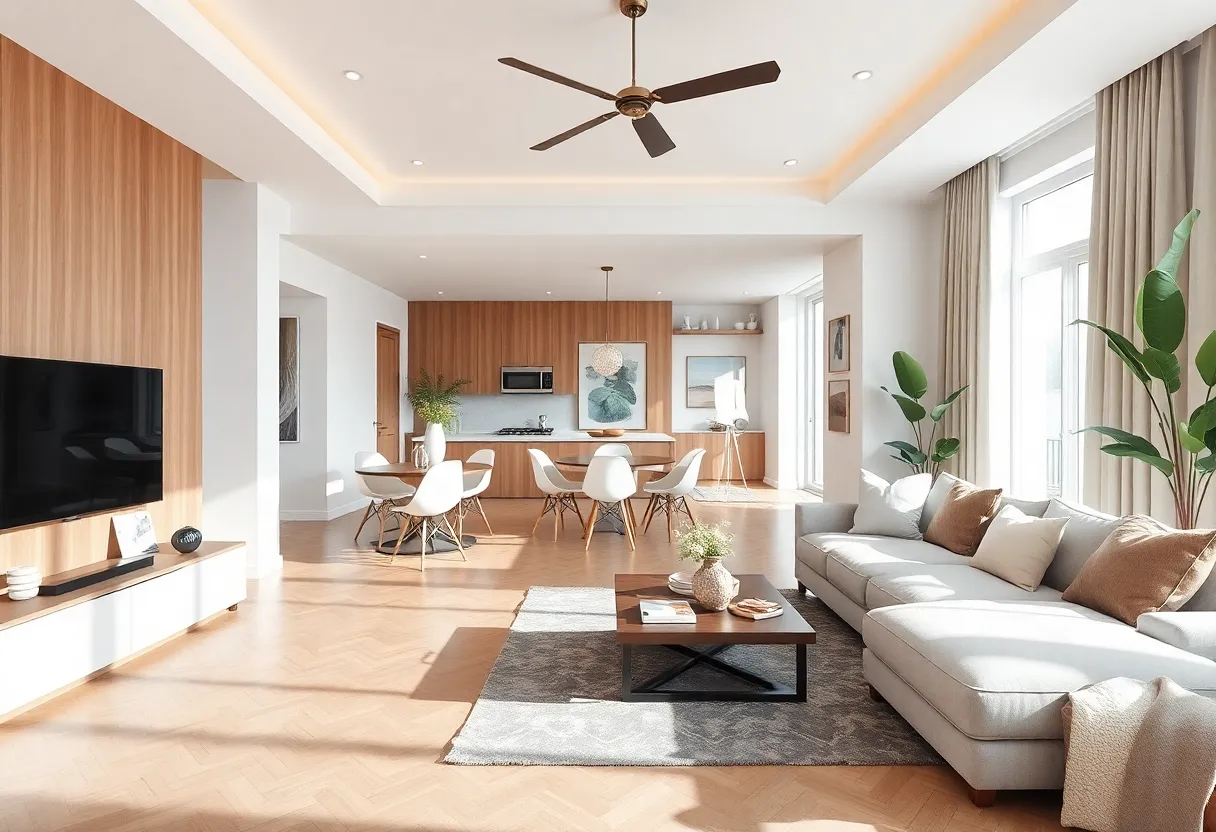How to Make the Most of Your Home’s Layout: Smart Design Tips for Every Space
Optimizing your home’s layout is fundamental to creating a functional, comfortable, and aesthetically pleasing environment. Thoughtful design enhances daily living, maximizes space utilization, and can even increase property value. This comprehensive guide offers strategic insights and practical techniques to leverage every square inch of your home—regardless of its size or style.
Understanding Your Home’s Structural Foundation
Assessing Spatial Flow and Functionality
The starting point for effective home design is a clear understanding of your current layout. Examine how each room connects and flows into the next. Identify areas where movement is hindered or inefficient. Maintaining key information—such as the natural pathways, entry points, and focal areas—will inform your redesign decisions.
Emphasize functionality by ensuring each space has a dedicated purpose. Avoid multifunctionality that compromises usability. For example, combining a home office with a guest space can work if thoughtfully partitioned, but clutter and noise may diminish its effectiveness.
Spotting Structural Constraints and Opportunities
Identify load-bearing walls, columns, or architectural features that limit modifications. While these elements may restrict certain layouts, they can also inspire creative design solutions such as built-in storage or decorative accents. Recognize where space can be expanded or reconfigured without structural compromise.
Optimizing Room Layouts with Strategic Planning
Prioritize Space Allocation Based on Usage Frequency
Arrange your home so that high-traffic areas are as open and accessible as possible. Frequently used rooms—like the kitchen, living room, and primary bedrooms—should have generous layouts that facilitate movement. Less-used spaces can be smaller or more specialized.
Implementing the Principles of Zoning
Divide spaces into functional zones—private, social, work, and recreational areas. Clear zoning minimizes clutter and enhances privacy. Use visual cues like rugs, furniture arrangements, or partial dividers to delineate zones within open-concept plans.
Designing for Flexibility and Adaptability
Furniture placement should allow for easy reconfiguration. Incorporate multi-functional furniture such as sofa beds, fold-away desks, or extendable tables. These solutions adapt to changing needs without requiring structural modifications, preserving the flexibility of your layout.
Maximizing Space Through Smart Furniture and Storage Solutions
Choosing Space-Saving Furniture
Select pieces that serve multiple purposes or occupy minimal space. Wall-mounted units, built-in shelving, and modular furniture increase usable area. Ensure furniture scale aligns with room dimensions to avoid overcrowding.
Innovative Storage Strategies
Utilize under-stair storage, recessed cabinetry, or over-door racks to declutter. Regularly evaluate stored items, removing duplicates or unused possessions. Proper storage not only declutters but also enhances the perception of space.
Integrating Hidden and Multi-Functional Storage
Hidden compartments in beds or coffee tables keep spaces tidy. Vertical storage solutions or furniture with concealed compartments preserve surface area for daily activities.
Enhancing Natural Light and Ventilation
Maximizing Window Placement and Usage
Strategically position furniture to avoid blocking natural light sources. Use light-colored drapes or blinds to diffuse sunlight. Well-lit spaces feel larger and more inviting.
Utilizing Indoor Plants and Reflective Surfaces
Incorporate plants to improve air quality and add visual interest. Mirrors positioned opposite windows amplify light and create an illusion of expanded space.
Improving Cross-Ventilation
Arrange openings and furniture to promote airflow. Proper ventilation offsets humidity problems and reduces reliance on mechanical cooling systems.
Creating Visual Cohesion and Illusion of Space
Color and Material Choices
Use light, neutral colors on walls and floors to make rooms appear larger. Consistent color schemes unify spaces, especially in open plans, enhancing a sense of flow.
Using Vertical Space Effectively
Elevate storage, artwork, and lighting fixtures to draw the eye upward. Vertical design maximizes the perceived height of rooms and frees up floor space.
Implementing Visual Dividers
Description of rugs, open shelving, or furniture arrangements can subtly define areas without sacrificing openness. These dividers maintain visual continuity while establishing distinct zones.
Incorporating Technology for Space Management
Smart Home Solutions
Leverage technology to enhance layout efficiency. Automated lighting, climate control, and smart storage systems adapt to your habits and optimize functionality.
Lighting Design and Controls
Layer your lighting with ambient, task, and accent fixtures. Dimmers and programmable controls allow flexibility and mood setting, emphasizing spatial dynamics.
Personalization and Aesthetic Consistency
Maintaining a Cohesive Style
Design your spaces with consistent themes, textures, and color palettes. Cohesion creates a harmonious environment that visually expands your home.
Adding Decorative Elements to Enhance Space Perception
Artwork, decorative lighting, and textiles add personality without cluttering. Use these elements to draw focus and add depth to your layout.
Final Tips for Every Home Layout
Regular Evaluation and Flexibility
Reassess your layout periodically. Adapt to changing needs or new furniture with minimal disruption. Small adjustments can significantly improve functionality.
Engaging Professionals When Necessary
Consulting interior designers or architects can provide insights into structural modifications or custom solutions. Professional input ensures safety, compliance, and optimal space utilization.
Conclusion
Optimizing your home’s layout demands strategic planning and a focus on core principles of space management. By understanding your space, prioritizing functionality, choosing adaptable furniture, and leveraging natural light, you can craft a home that is both efficient and visually appealing. Maintaining a balanced, thoughtful approach guarantees that every corner of your residence contributes positively to your lifestyle, making your home truly work for you.
Author: STAFF HERE INDIANAPOLIS WRITER
The INDIANAPOLIS STAFF WRITER represents the experienced team at HEREIndianapolis.com, your go-to source for actionable local news and information in Indianapolis, Marion County, and beyond. Specializing in "news you can use," we cover essential topics like product reviews for personal and business needs, local business directories, politics, real estate trends, neighborhood insights, and state news affecting the area—with deep expertise drawn from years of dedicated reporting and strong community input, including local press releases and business updates. We deliver top reporting on high-value events such as the Indianapolis 500, Indy Jazz Fest, and the Indiana State Fair. Our coverage extends to key organizations like the Indy Chamber and Visit Indy, plus leading businesses in motorsports and healthcare that power the local economy such as Indianapolis Motor Speedway and IU Health. As part of the broader HERE network, we provide comprehensive, credible insights into Indiana's dynamic landscape.





